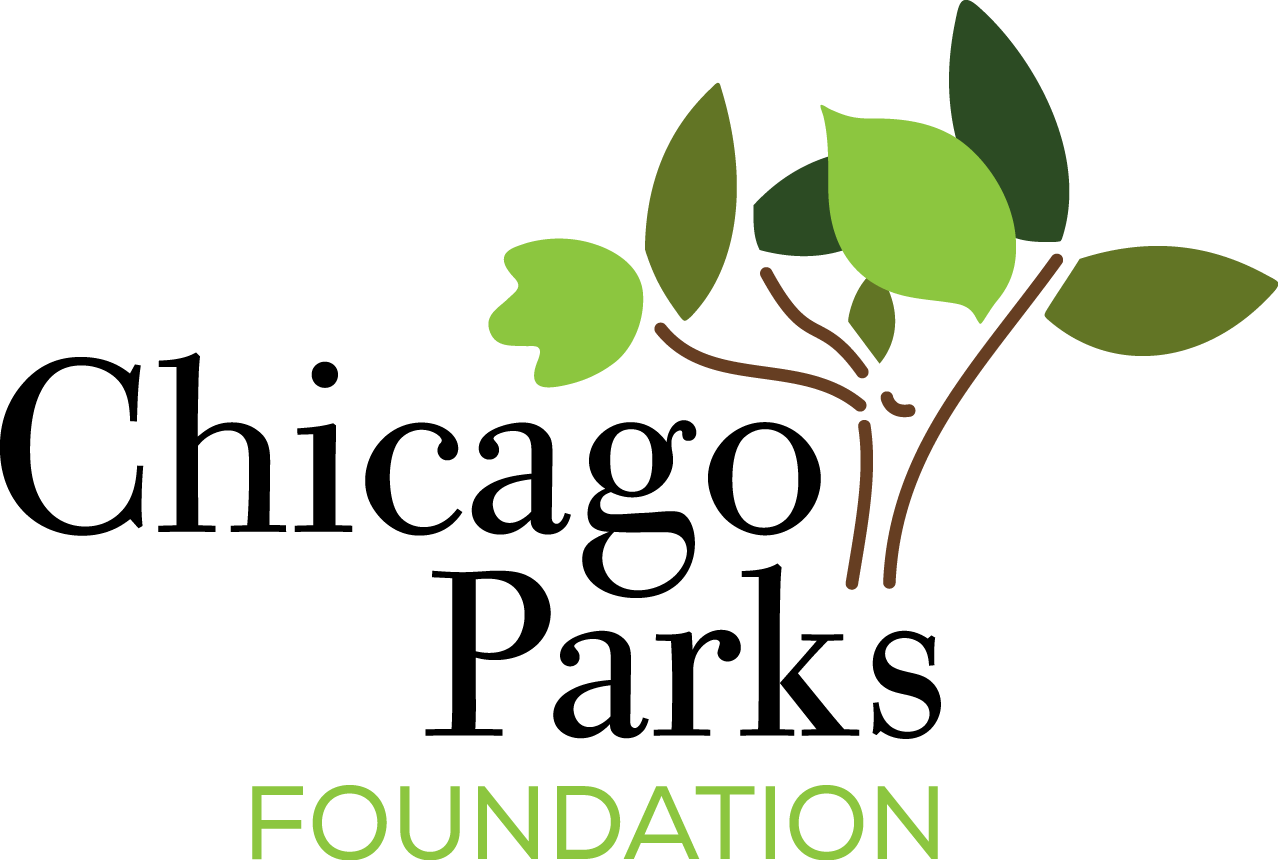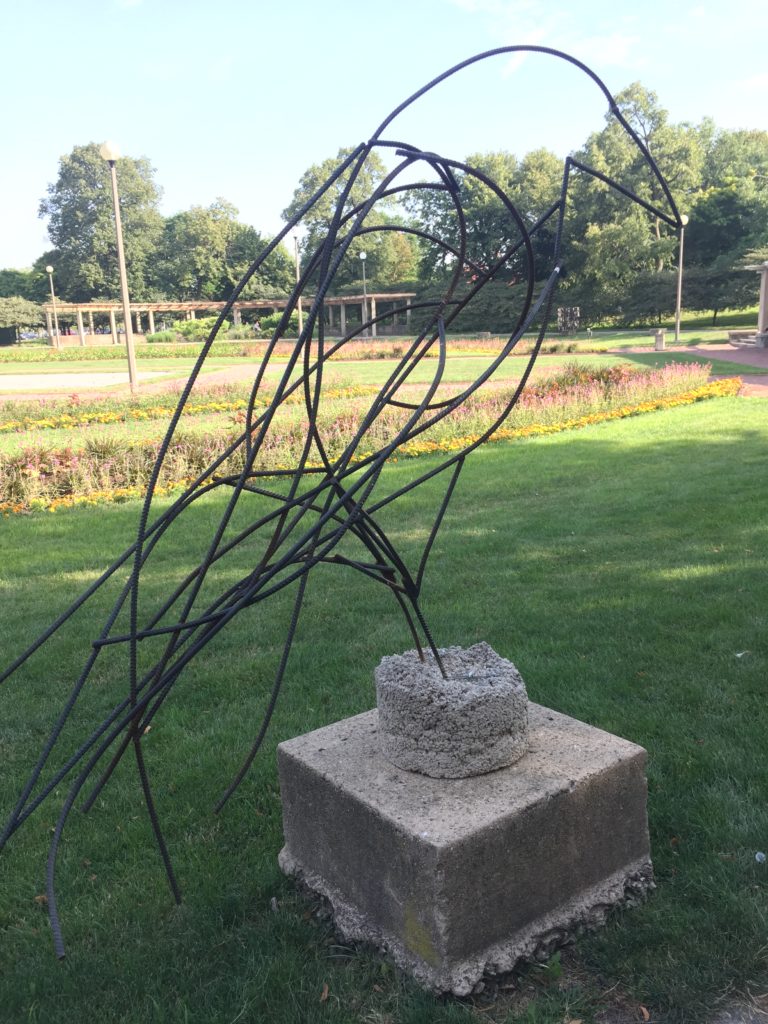Art in the Parks: Historic Jens Jensen Formal Garden
Join the Jensen Formal Garden Working Group tonight - Wednesday, July 19th, from 6-8 pm - at the National Museum of Puerto Rican Arts & Culture for an artist talk and reception celebrating the public art activation of the Jensen Formal Garden.
Learn more about the event here.
In 1908, the Humboldt Park Formal Garden opened to the public. Tucked in the landscape and surrounded by trees, the garden provided a tranquil and natural getaway from the hustle and bustle of early 20th century city life. The original garden featured five tiers of circular flower beds and an upper terrace with concrete and wooden pergolas and benches. Emerald green Teco Pottery urns graced pedestals in a circle around the garden.
The Humboldt Park Formal Garden is often referred to as the Jensen Formal Garden for its designer, renowned landscape architect Jens Jensen (1860-1951). Jensen was perhaps best known for his role in developing the Prairie Style of landscape design. The Formal Garden is especially significant because it is an example of Jensen's early incorporation of the Prairie Style with more conventional styles of garden design and planning.
“Let us call [them] ‘community gardens,’ for they are gardens for the entire community - for those who have no other gardens except their windowsills.”
While still a beautiful garden and favorite place for many visitors to Humboldt Park, many elements of the original Formal Garden have not been maintained. The urns have been removed, the architectural features are rotted and crumbling in places, and only minimal floral annuals remain. In an effort led by Humboldt Park residents, the Chicago Parks Foundation and the Chicago Park District are joining together with community members to restore this beautiful and iconic garden. Learn more in this previous Seeing Green post.
As part of the efforts to revitalize the Formal Garden and in celebration of the citywide Year of Public Art, the Chicago Park District, in partnership with Fieldwork and the Jensen Formal Garden Working Group, has selected four Chicago artists to create temporary site-specific public art installations for the garden. These artworks, installed in the Spring of 2017, are visually and conceptually linked to the history and design of the garden and the work of Jensen. The installation also pays homage to Jensen's 1908 Outdoor Garden Exhibit, for which the Formal Garden was a designated site.
A Chicago Tribune article from the time wrote of the exhibit, "The chief object of the 'experiment' is to impress upon Chicagoans how much can be added to a garden or a piece of woods by appropriate sculpture, how each sets off the beauty of the other."
More about the artists & artworks currently on view at the Jensen Formal Garden:
Photo Credit: Sandra Steinbrecher 2017
Vivian Visser
Re-form, Re-vive
Linden, Willow, and Steel - 2017 - 5' x 2' x 2'
Artist Statement: The Jens Jensen Formal Garden once had large clay pots on small pedestals encircling the garden's center. The original pots, or urns, were made by a famous local company called the American Terra Cotta Co. Ceramics made by this company were called Teco Ware and were covered in a particular grayish-green matt glaze. The pots are long gone now as the garden has changed over the decades. Now is a time for regrowth. The garden is re-growing the pots to make itself whole again. These new natural pots are hand-woven from linden and willow branches.
Andrea Jablonski & Laura Miracle
Guardians of the Green
Concrete, Rebar - 2017 - 5' x 3' x 7'
Artist Statement: Guardians of the Green was inspired by the importance of public green spaces for birds of all species. Humboldt Park is host to more than 65 species of birds, from woodpeckers to flycatchers, warblers to waxwings. But of all those, the common crow (Corvus brachyrhynchos) stood out with its resilience, its adaptability, and its tendency to build nests with whatever local material is abundant - native grasses, wire coat hangers, or cigarette butts. Often considered ominous, we find comfort in its presence.
Photo Credit: Sandra Steinbrecher 2017
Lauren Chipeur, April Martin & ZoË Wonfor
A Kind of Clearing
Limestone, Copper, Varied Plants - 2017 - Various Sizes
This series of sculptures is made in response to the history of Humboldt Park, but also makes reference deep into the earth itself. Much of the State of Illinois is drawn over a bedrock of limestone. It is the choice material for these pieces due to its quality of being naturally-occurring and locally available, as well as a significant feature in the work of Jens Jensen.
The artists are specifically interested in the use of geological materials that tether place to history. In the case of Illinois and specifically Chicago, limestone is a ubiquitous material used in architecture largely because of its local availability and durability. Limestone functions as the distillation over a time of a world unto itself, living, dying, stacking, decomposing, forming, and solidifying into bedrock. Limestone is formed through the compression of layers of minerals and organic material (largely oysters, mollusks, and coral) over time.
The pieces also use copper, which, when exposed to natural elements changes color and actively stains material that it is in contact with - so, the limestone's porous nature makes visible the passing of time and the changing of material.
Jorge Felix
P'al Norte
Steel, Wire, Used Shoes, Dirt, Morning Glories - 2017 - 6.5' x 4' x 4'
Artist Statement: P'al Norte (to the North) speaks about immigrants' journeys to this country. Each of the 40 pairs of shoes tells a story of immigration: a father and son, a husband and wife, a couple of brothers, and many more. The sculpture is meant to interact with the community and its surroundings. Dirt has been placed inside the shoes and the morning glories planted. After some time, the sculpture's steel will be rusted and covered in vines and flowers, and each shoe will be a home for birds and insects.







